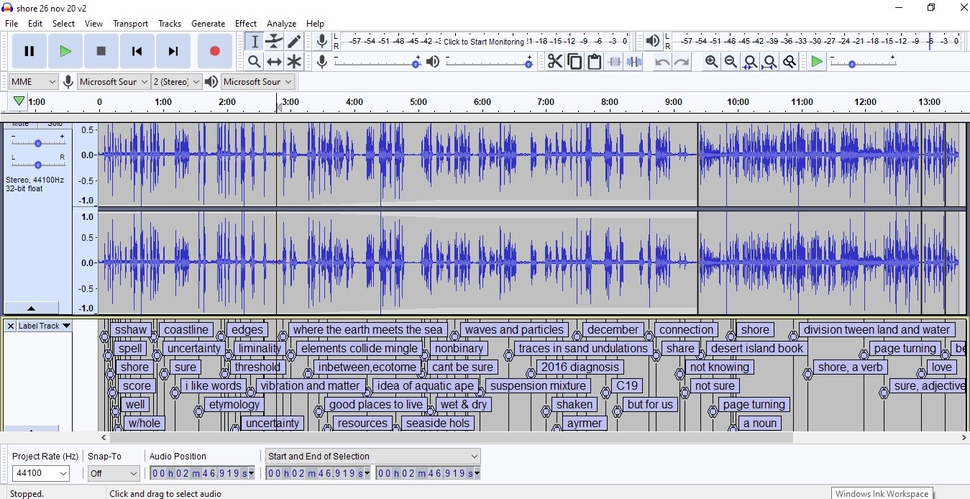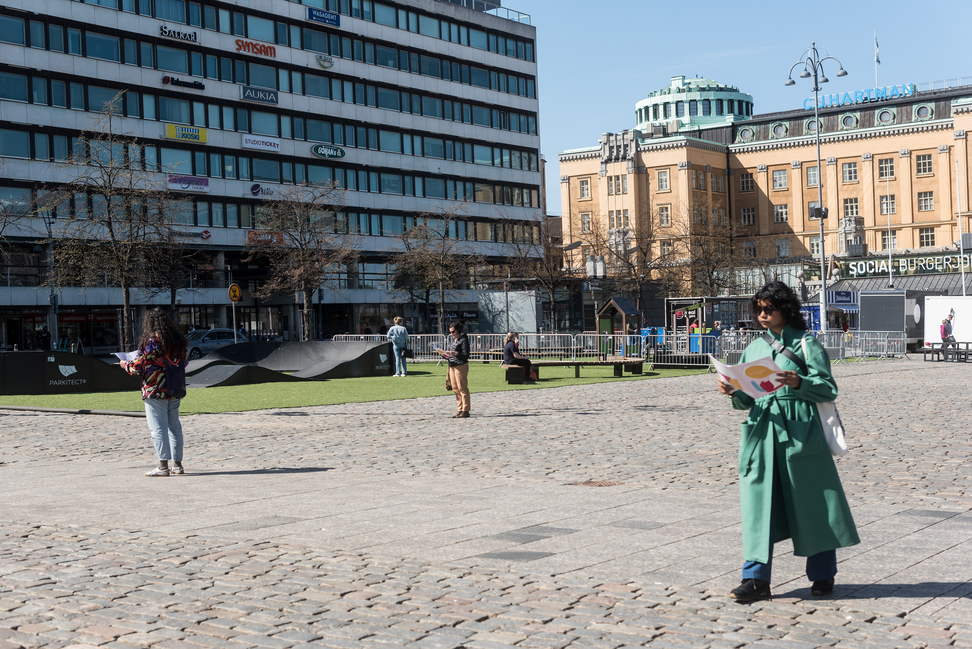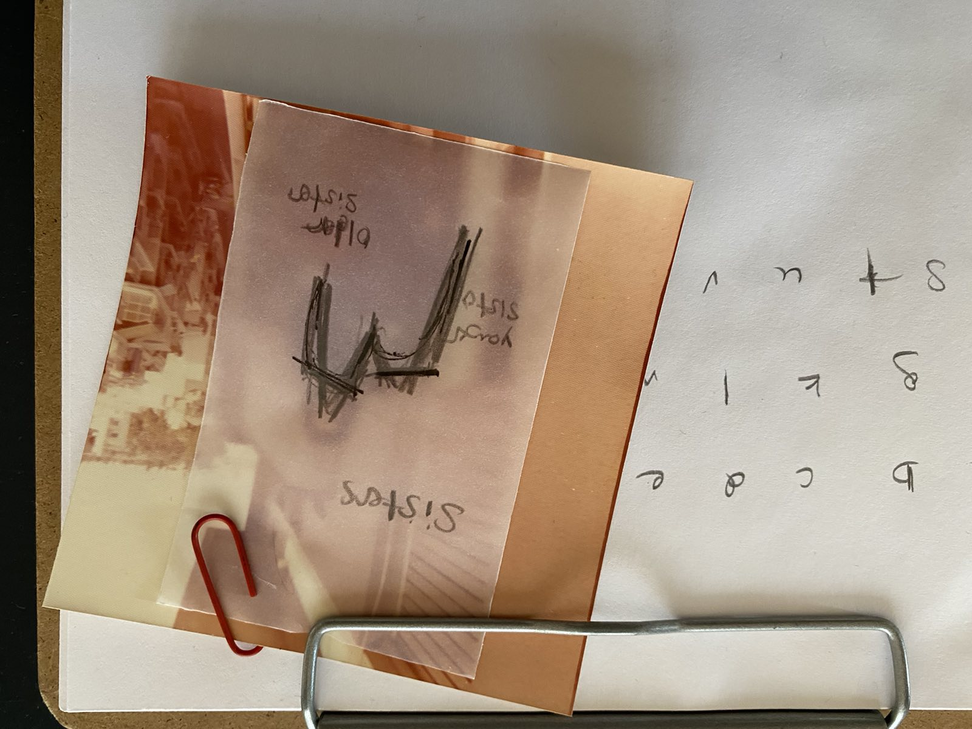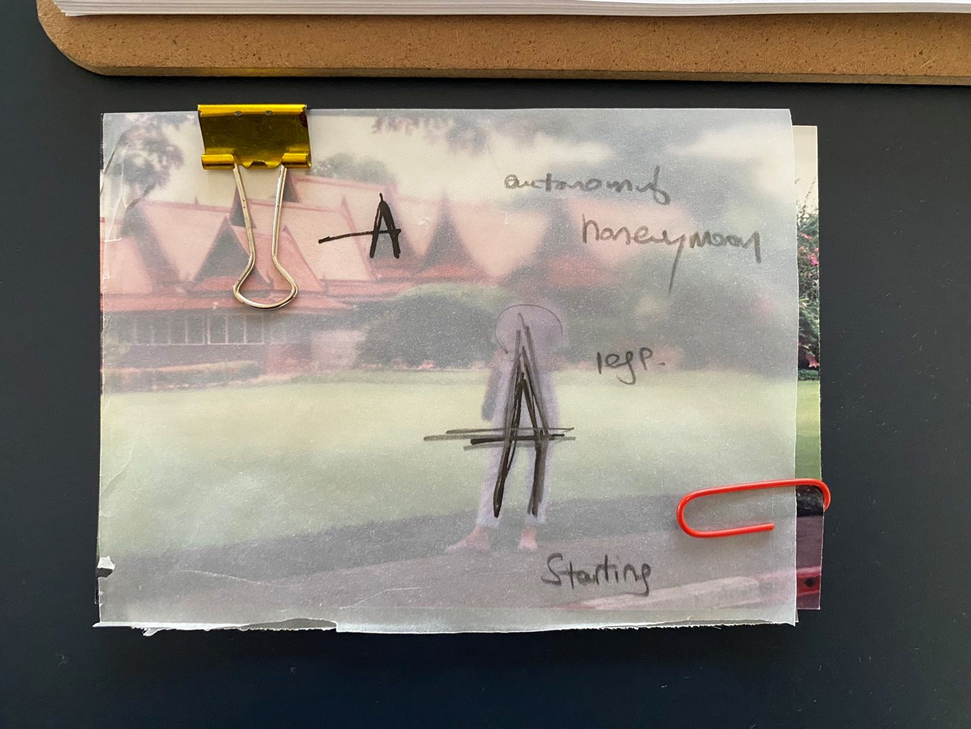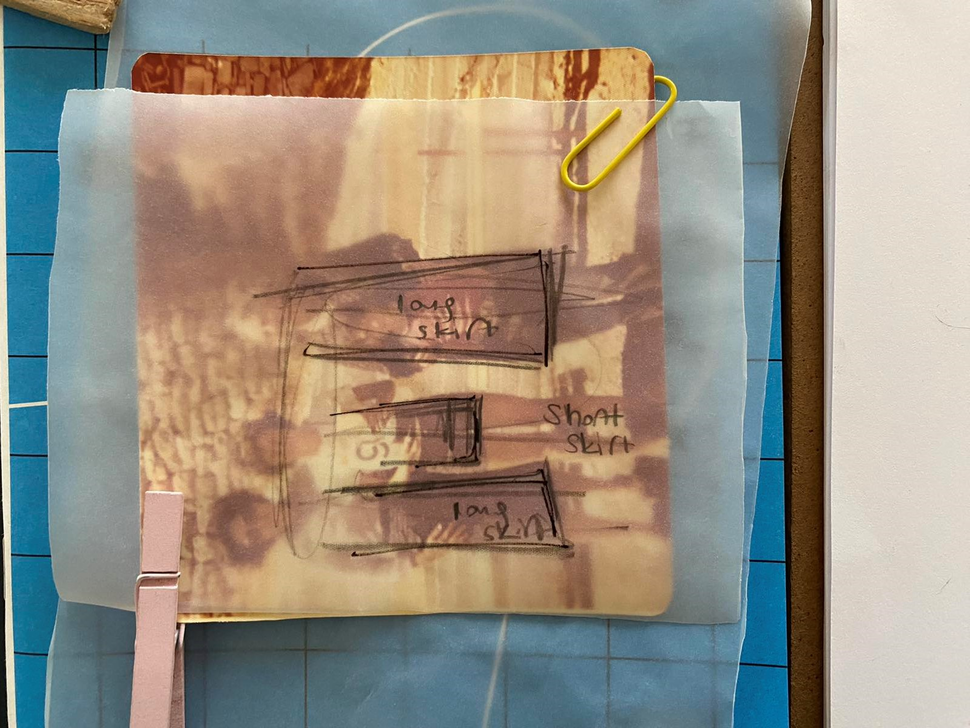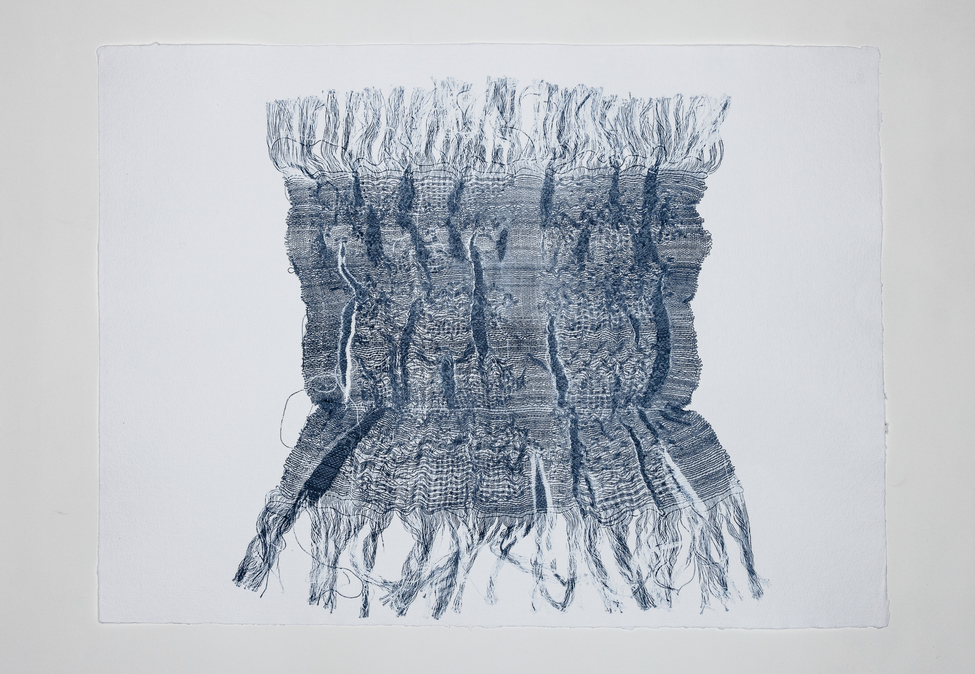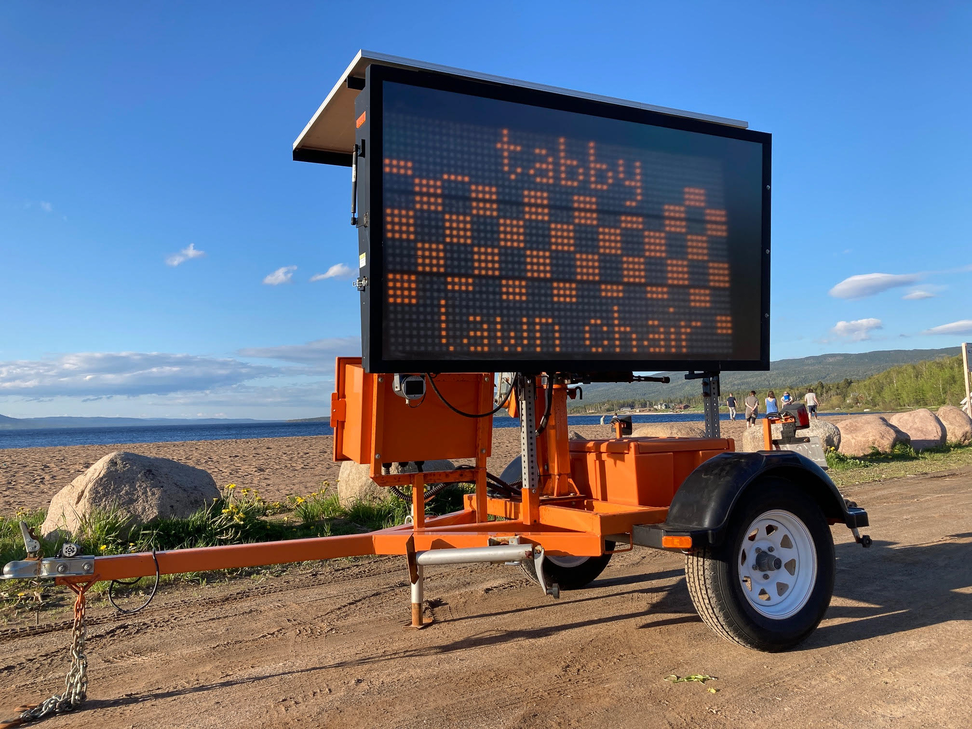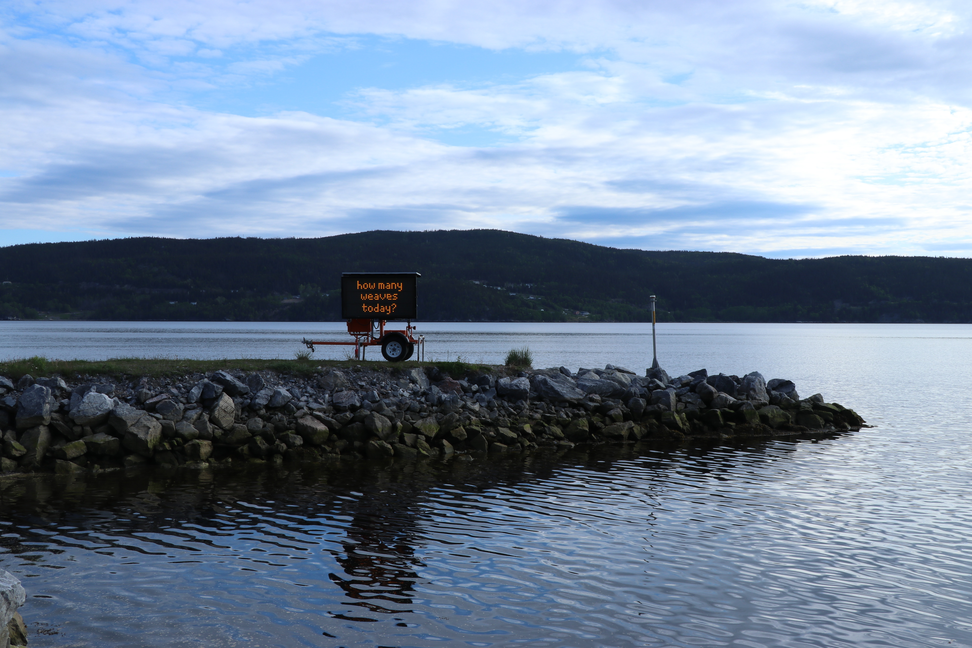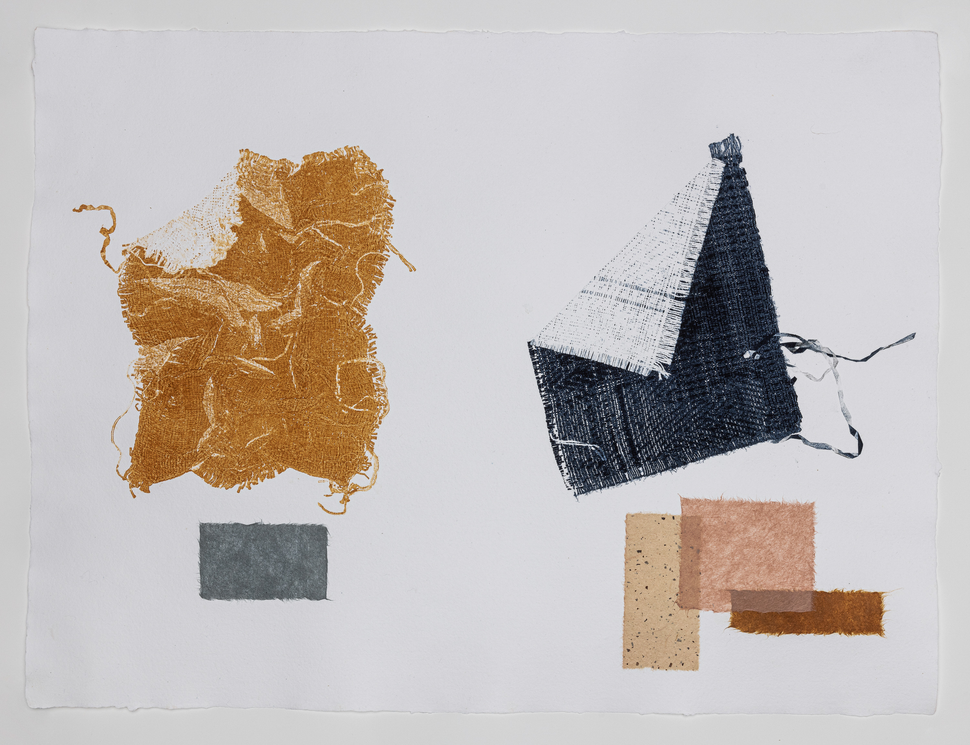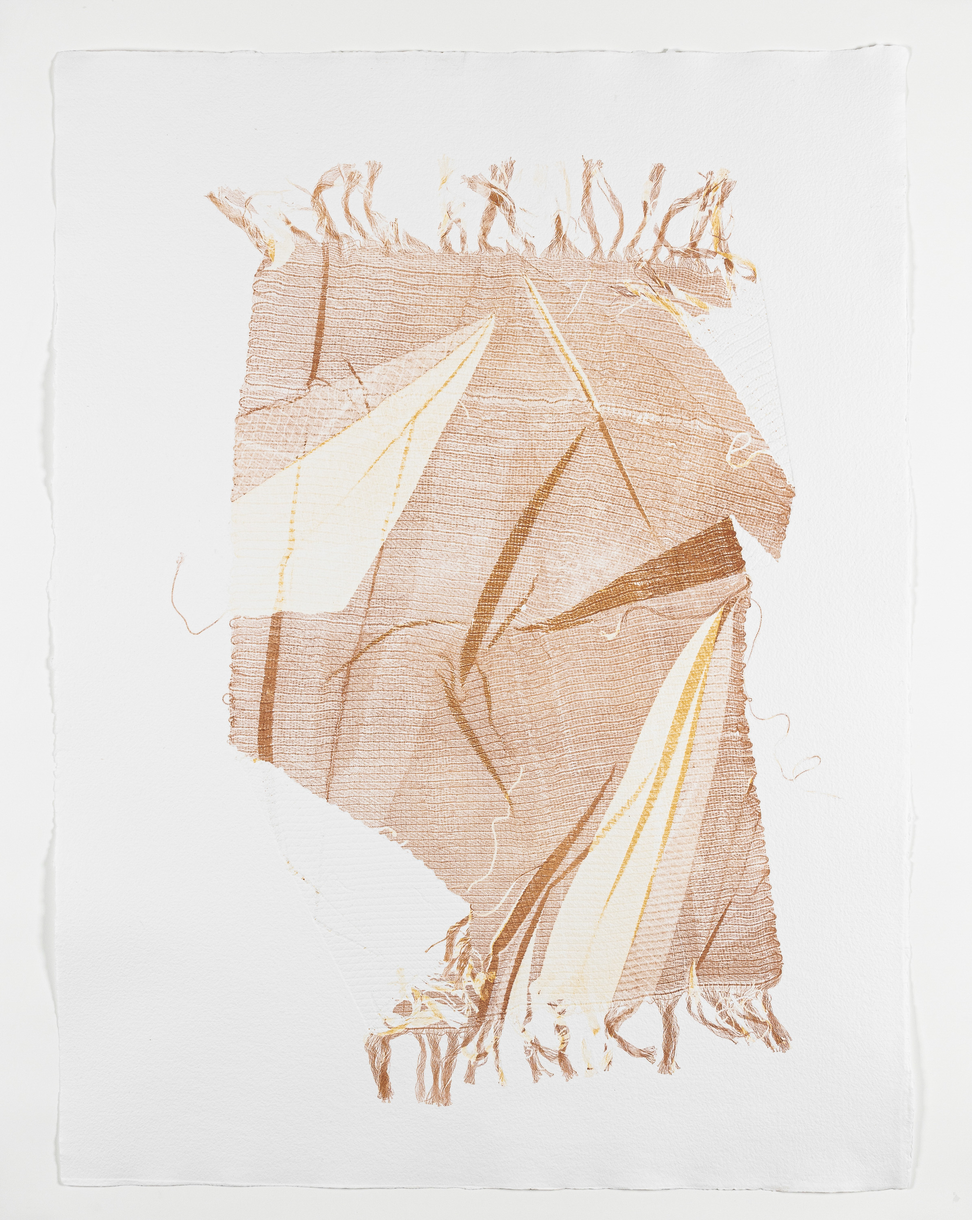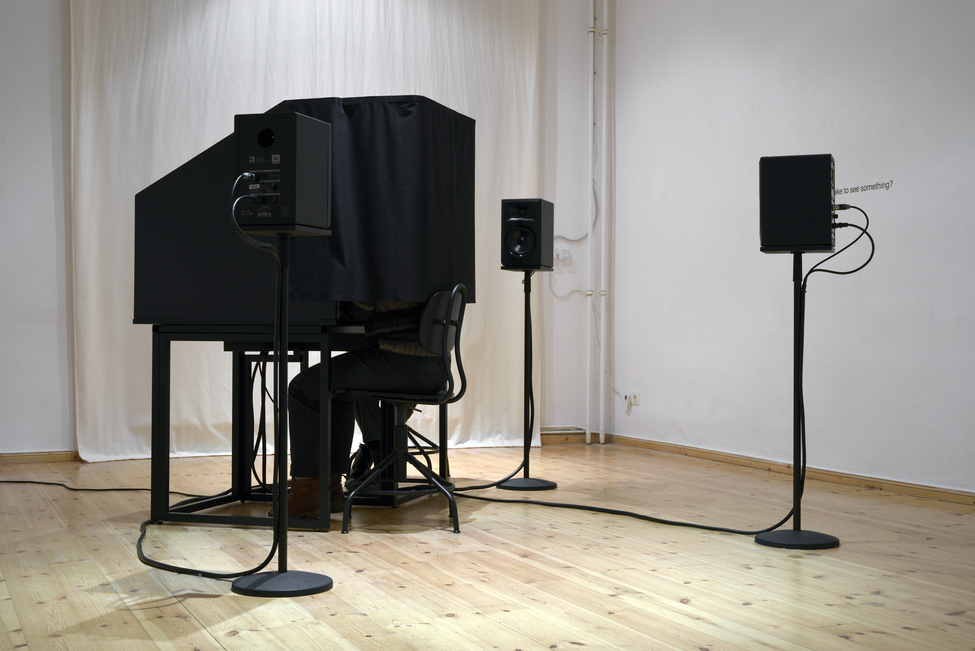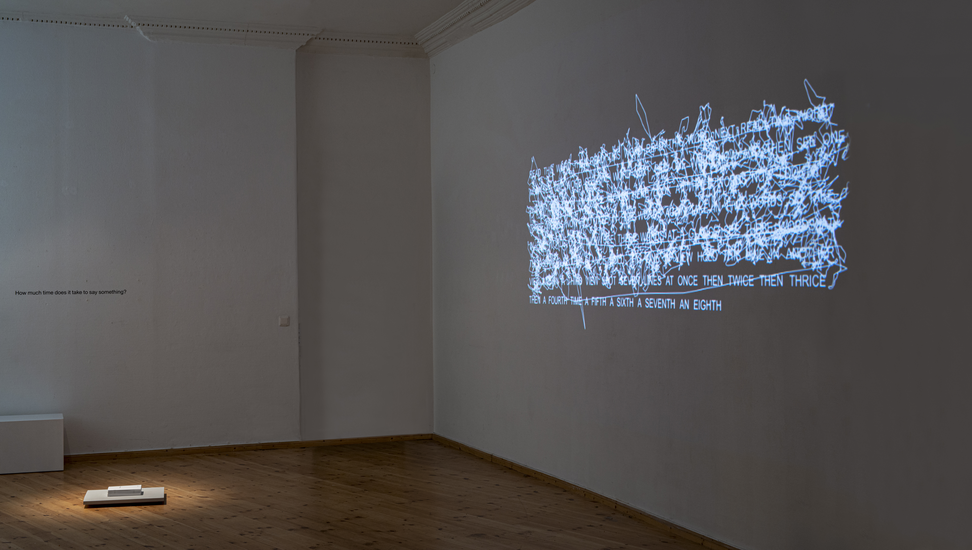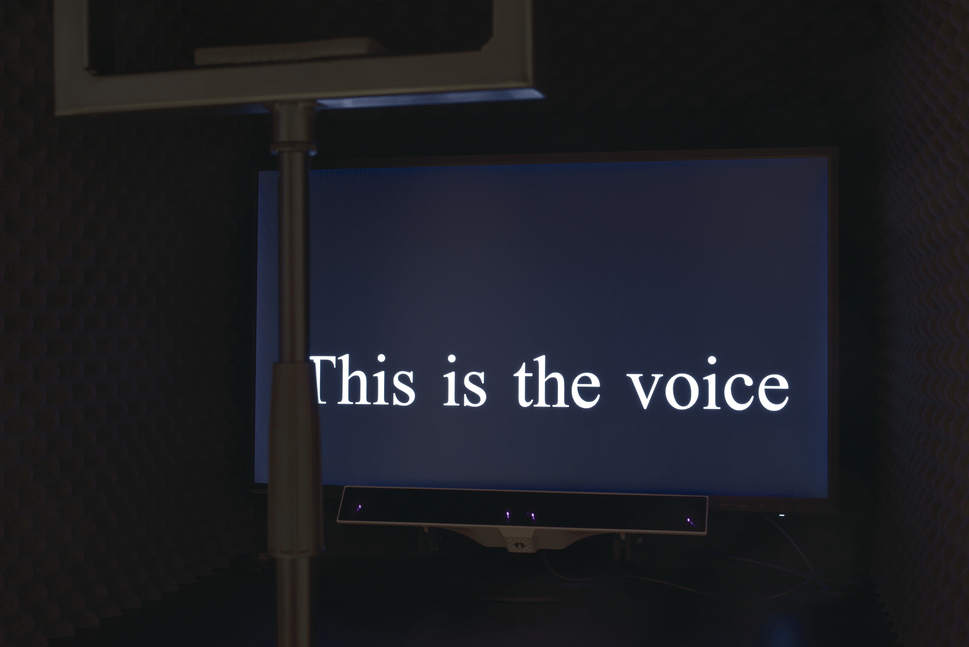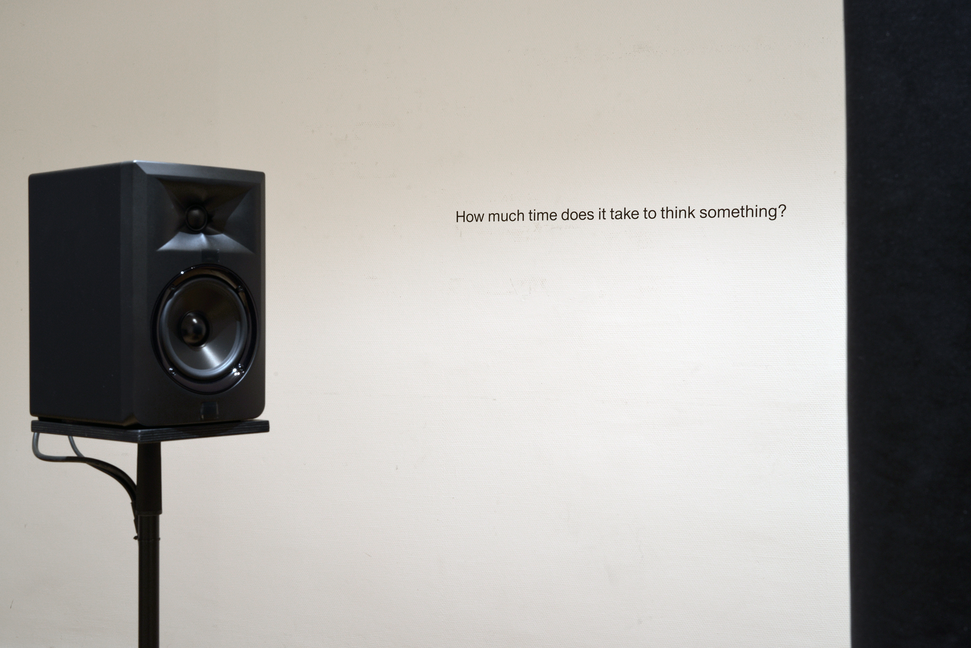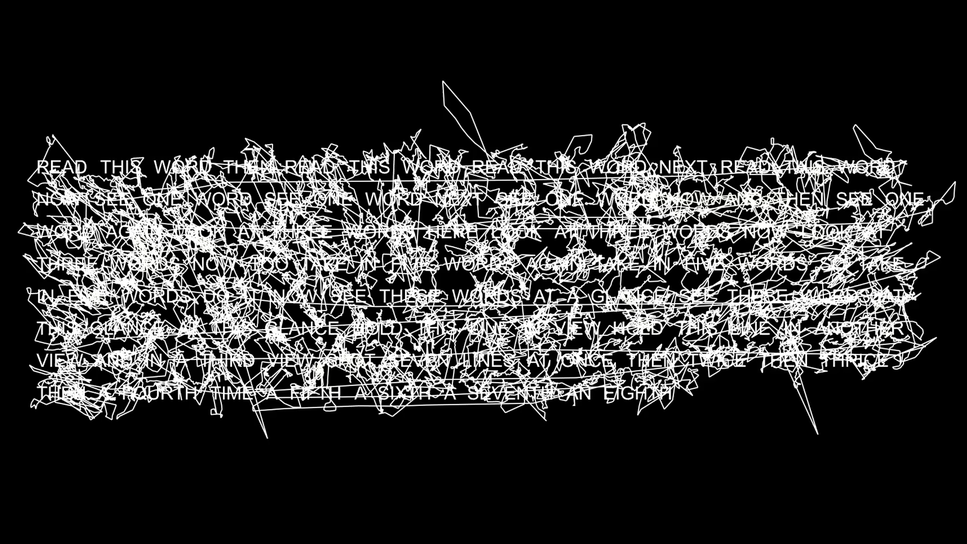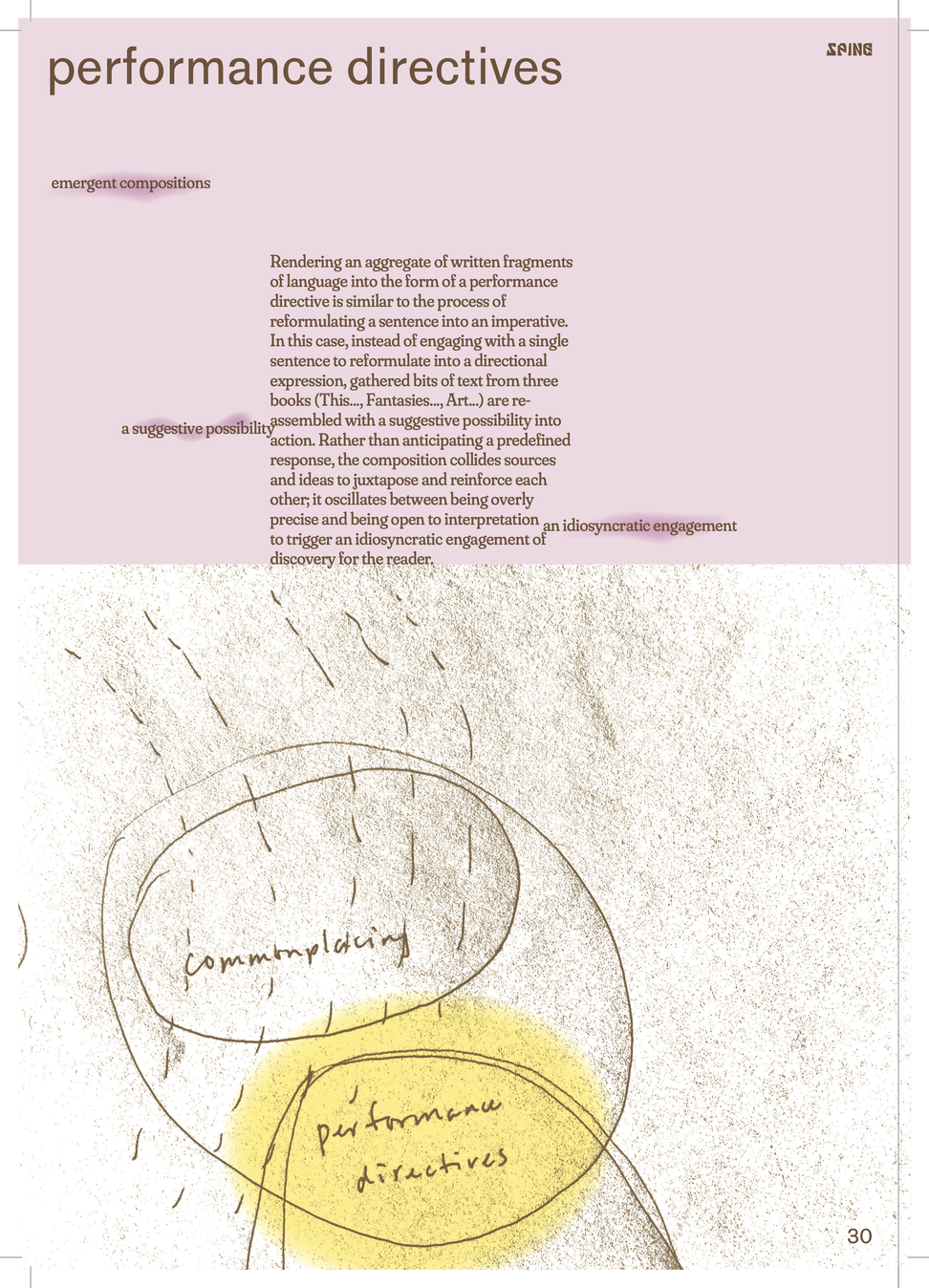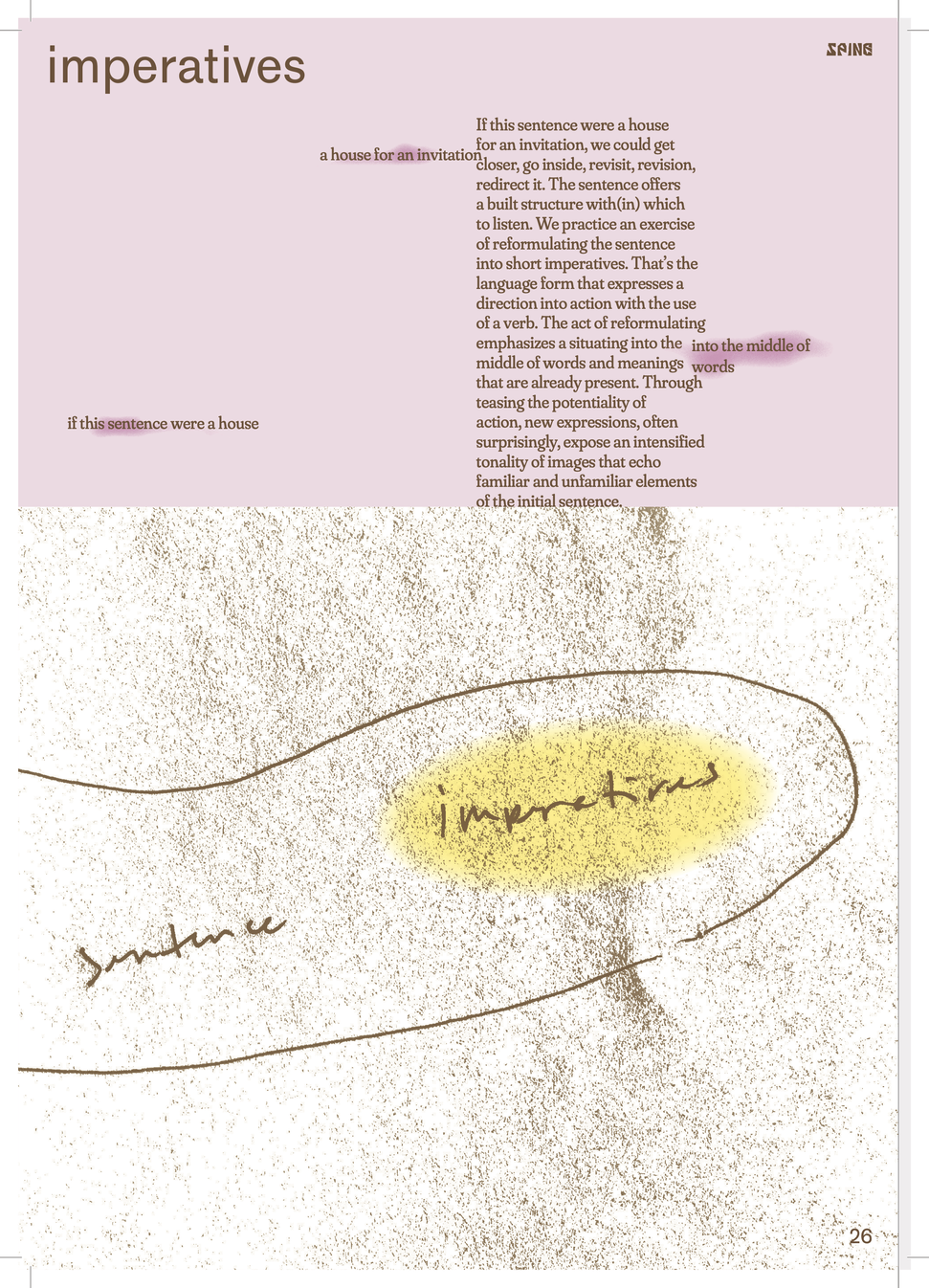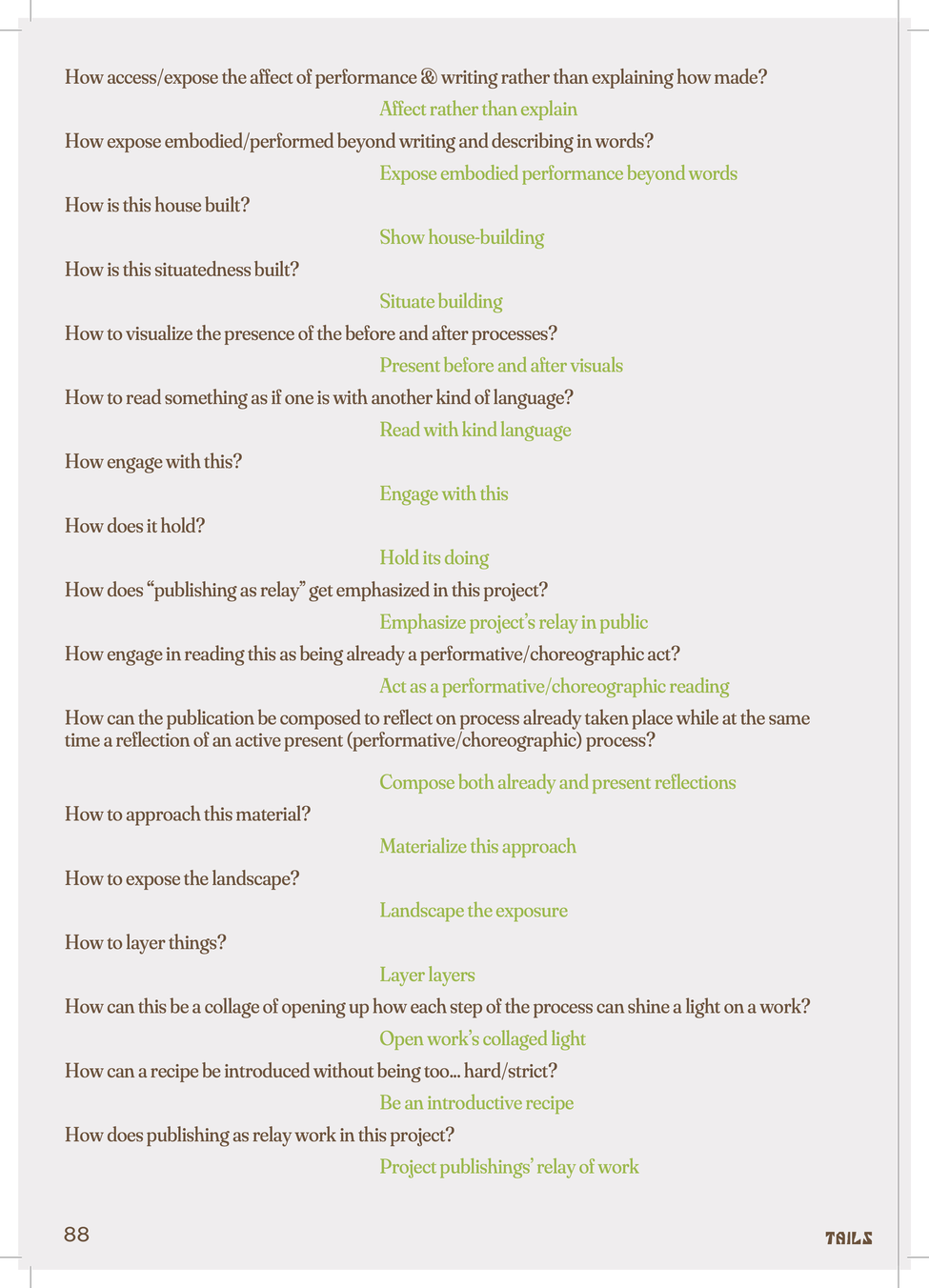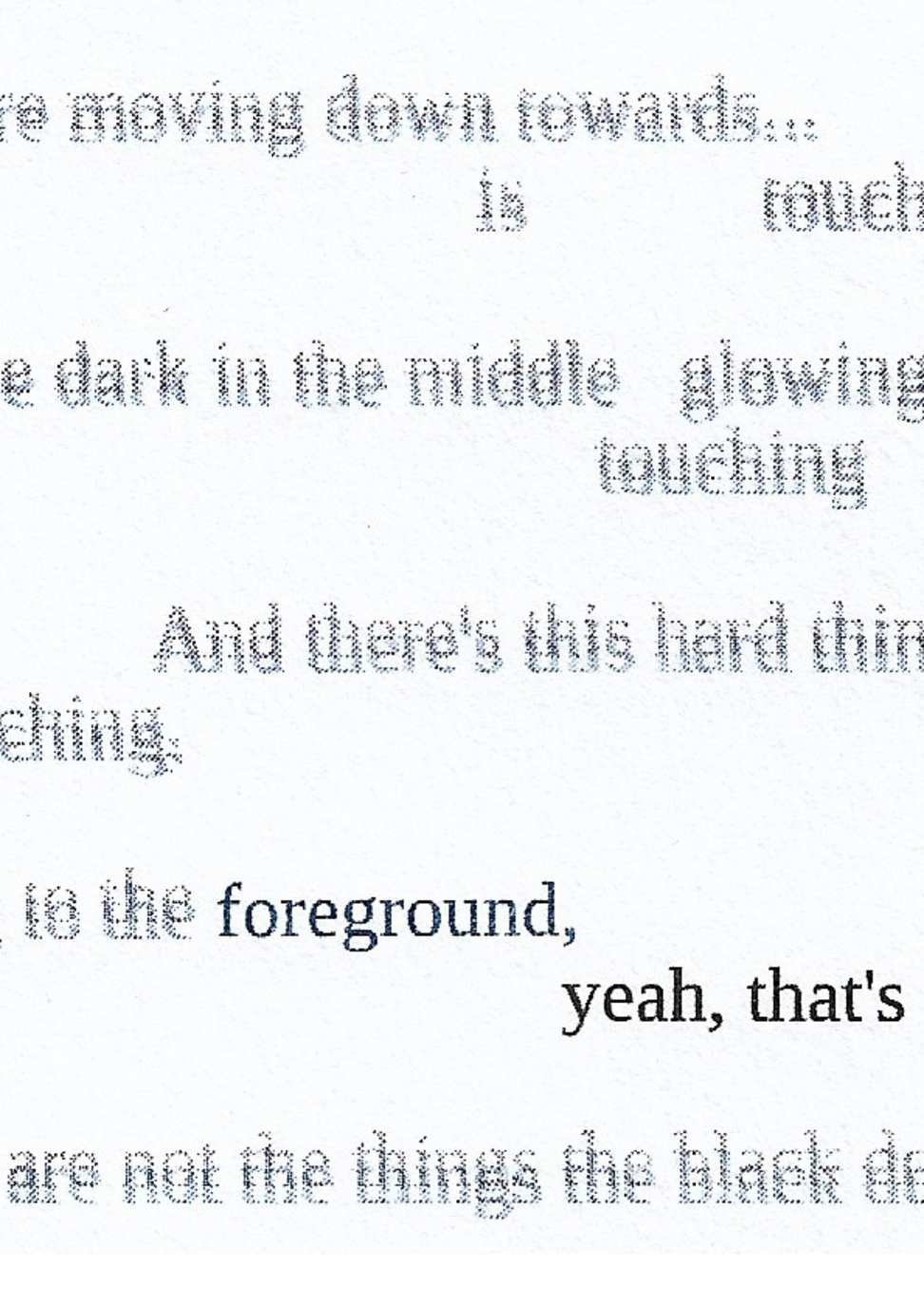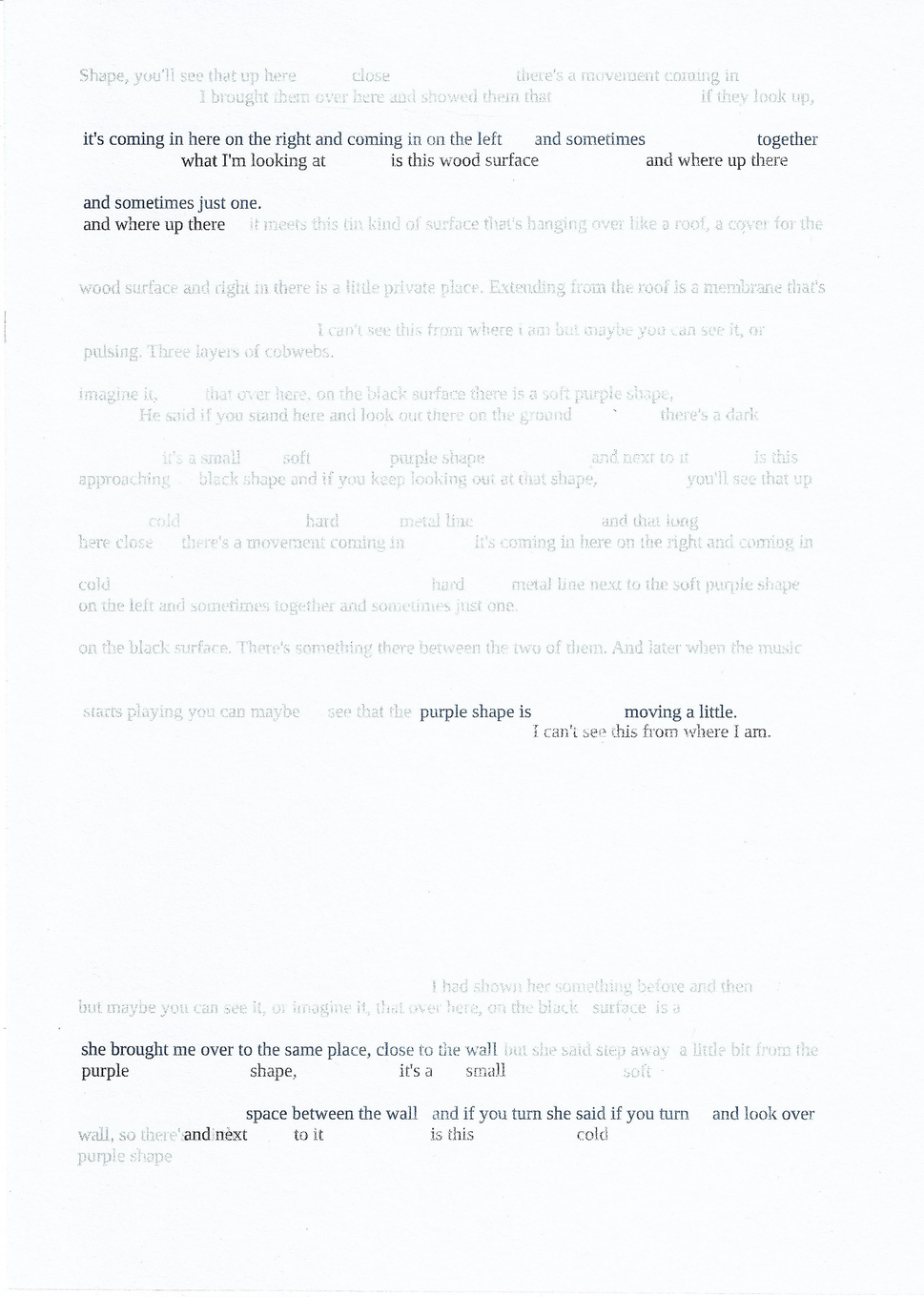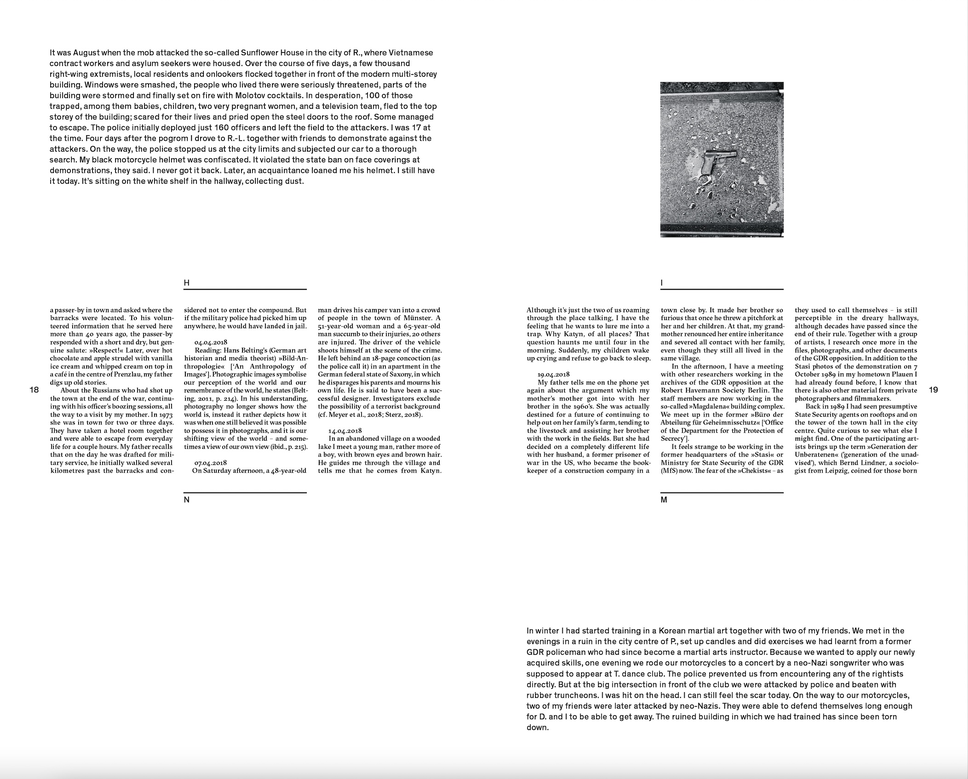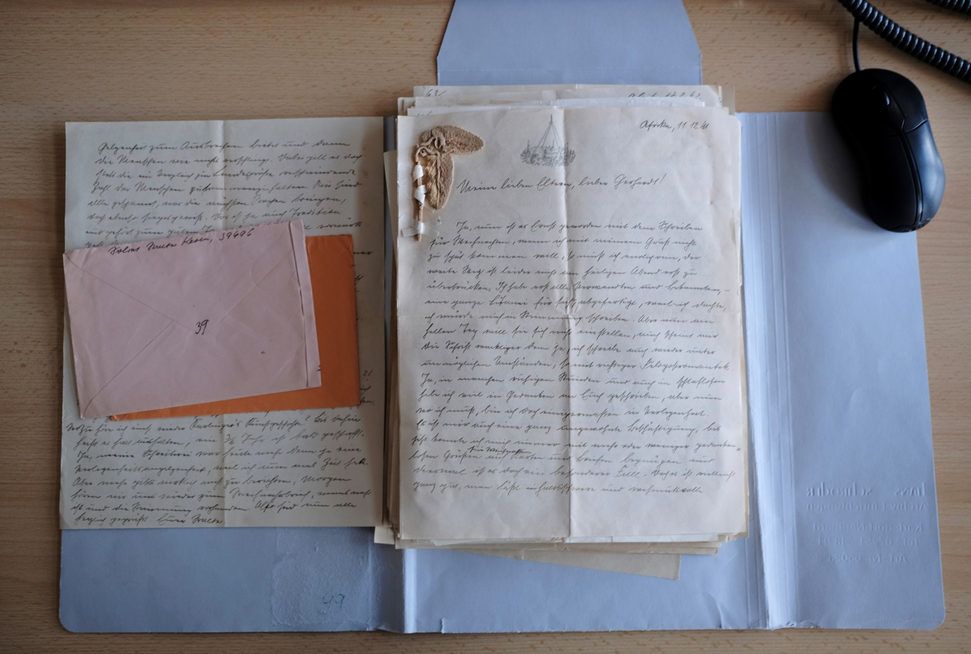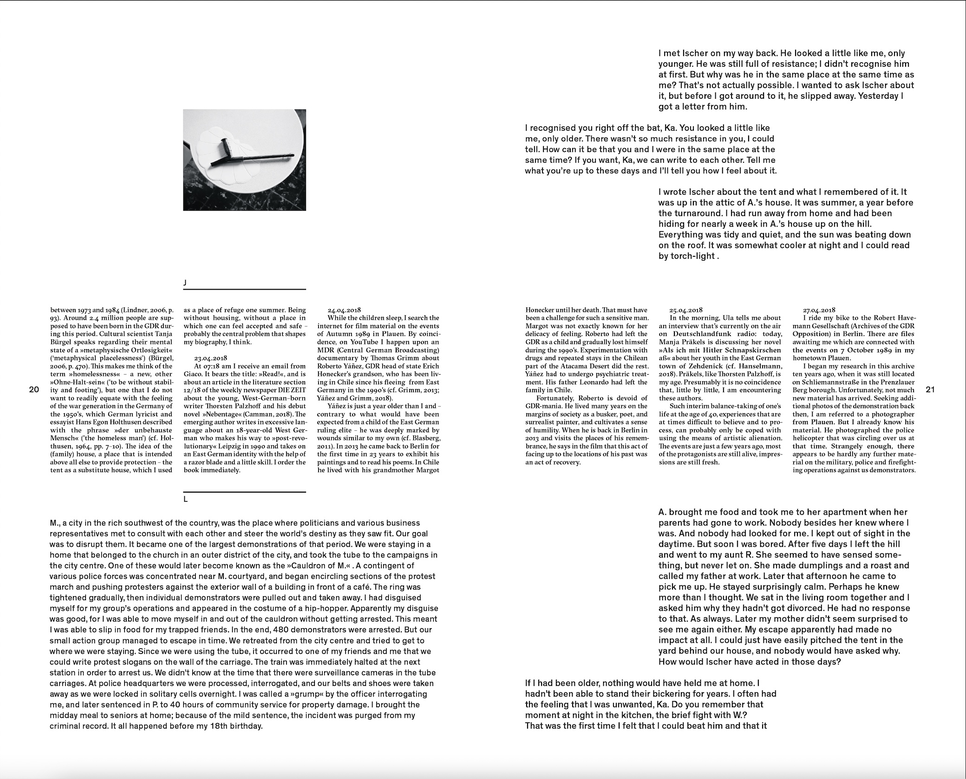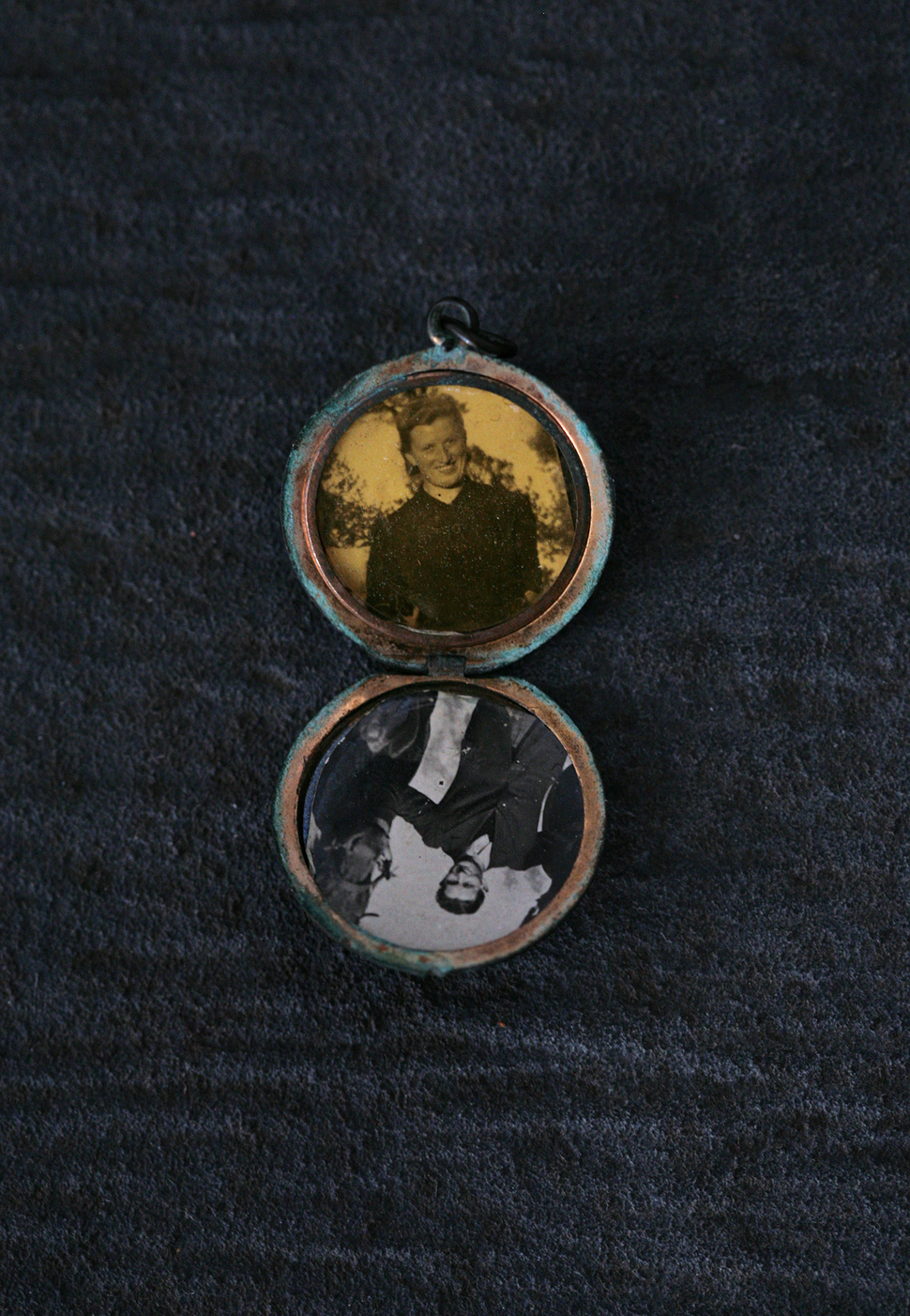the time of the word
the space of the word
the sound of the word
the sense of the word
the voice of the word
collaborative writing
choreographic publishing
transversal attentions
sense-drifting
situated descriptions
autoethnographic research
autofiction
non-linear narrative
fact-based storytelling
experimental writing
<< Sarah Scaife
Technically a one-way communication, I’m interested in how spoken radio might nurture a sense of nuanced conversation across space. Gentle research journeys explore wellbeing and medicine with honest uncertainty.
Medicines of Uncertainty is my practice-based PhD enquiry. (1) Typically, the language of biomedical medicine is as certain as possible, outlining risks whilst prescribing a clear path from diagnosis to treatment. Academic writing is similar. Lived experiences of ill-health, however, are uncertain, unpredictable.
My performative research methods seek to open and recover ways to articulate and attend to spells of illness outside biomedical language. Methods combine intentional walking, deep listening, visual and sound-based making. I play with exploring uncertain languages around medicine, material, calls of the body, human and more-than-human voices.
Making radio is a significant strand of this enquiry. Source material for radio works is primarily recorded live in my local landscape, then edited and collaged in the studio. Radio is a strangely private form of public media, between invisible maker and curious listener, in homes, cars and other personal spaces:
How can we harness the power of radio and broadcast to nurture new relationships between physically distant bodies? What new skills and abilities do we need to cultivate as resonant subjects? (2)
As an artist researcher with lived experience of significant ill-health, feeling vulnerable to covid, I initially experimented with my own voice in dialogue with a local, unspoken world of the more-than-human. My enquiry remains outdoors or in on-line spaces, but other human voices now join the recording process.
REFERENCES
(1) This PhD research is funded by the South, West & Wales Doctoral Training Partnership (SWWDTP)
(2) Arts Catalyst Radio, Sheffield, UK, 01 Sept 2022 (LINK)
Initially I made six intentional walks with a ‘zoom’ recording device. Each walk, typically taking a couple of hours, responds to a pre-selected theme. Speaking as I walked, I followed “impulses, connections and revelation” in order to “recognise those things you didn’t know in advance but knew somewhere inside of you” (1). This became Slow Radio for Wellbeing, a six-part series broadcast on Soundart Radio 102.5FM.
Repetition of practice enabled me to find language, style and tones of communication in relation to my enquiry (along with improved technical capability).
Soundart Radio then invited me to make a 28-minute soundwork for an international broadcast partnership. I created it from material collected and recorded live by self-selecting human contributors who joined my workshop (2). In a sympathetic garden, participants were invited to think about what ‘medicine’ means to them and then wander off. They each recorded up to ten minutes, in conversation with whatever chose to present itself to them. This became Radia Show 0912 And you’ve asked me to think about medicine.
In Jesse Miller’s words:
Listening to that piece I really love the way it encourages listeners to engage in new kinds of attention. As we listen, we are entrusted with this opportunity to bear witness to other people’s experiences of illness and of the world, but these experiences never remain isolated […] the voices are woven together with the sounds of the environment so that the distinction between figure and ground is made unstable. [...] (3)
REFERENCES
(1) Kentridge, W. (2019). Art must defend the uncertain. TateShots. https://www.tate.org.uk/art/artists/william-kentridge-2680/william-kentridge-art-must-defend-uncertain
(2) Workshop held in the gardens of Dartington Hall, Devon, UK, at Sentient Performativities: thinking alongside the human, June 2022. https://performativities.info/media/Online-programme-core.pdf
(3) Dr Jesse Miller, welcoming Sarah Scaife to run a workshop ‘Sound Medicine/Sonic Medicine’, an on-line event for Healing/Arts series, University of Buffalo, USA, 12 October 2022. https://healingartssymposium.wordpress.com/schedule-2/
CREDITS AND LINKS
1. Sarah Scaife, sound editing screen showing work in progress – making of Slow Radio for Wellbeing No.4 shore | sure. Creative Commons CC BY-NC-SA 4.0
2. Sarah Scaife, previously unpublished extract from work in progress – making of Slow Radio for Wellbeing No.4 shore | sure. Creative Commons CC BY-NC-SA 4.0
Tackling power through a public performance does not need to be a grand gesture, a heroic excavation of an artefact for our critical gazes to assess and judge. A performance can also shed a delicate light into the wavering cracks and crevices of the quotidian where power operates, inalienably, like cytoplasm that keeps the whole intact. Power does not begin and end with manipulation and oppression. It is also something much more complex and includes things like the power to do something unprecedented, to speculate, and to feel something thought forgotten.
This kind of gentle, indirect, whisper-like illumination of the intricacies and dynamics of the everyday is what, to me, Präppla did.
Präppla is a performance by the group Cocker, Coyotzi Borja, Daus, Grayson, Saumya, Séraphin & SOUNDS. It is rooted in Lena Séraphin’s postdoctoral research project Sharing Text at the Faculty of Education and Welfare Studies of Åbo Akademi University, realized during a three-year stay at the artist’s residency in Vaasa run by Pro Artibus Foundation.
“Präppla” is a Swedish word that means “to chatter”, but, as an onomatopoetic word, it also sounds like chattering. For about 20 minutes, three performers (Andrea Coyotzi Borja, Vidha Saumya and Séraphin) walked around the market square, seemingly ignoring each other, occasionally reading aloud texts from the folders they carried in their hands like tourists carry maps. The chattered, live texts formed one third of the performance’s overall score, which is based on an earlier iteration and writerly score called Acousmatic. First notated by the performers at earlier sessions at the same place, and then re-arranged by sound artist Ava Grayson, the spoken texts consisted of multi-sensory, bodily impressions of being at the market square, often highlighting the sensing body as a nexus of human and non-human, living and inanimate, past and present.
The two other layers of the score by Grayson were pre-recorded material played through speakers. The three performers carried portable speakers that played a combination of still more impressions together with melismatic, non-textual singing and chopped-up, stutter-like verbal utterances at the edges of language.
Finally, a level with a more directly material relation to the square itself was played through the four loudspeakers at the square’s edges. It consisted of field recordings and synthesizer sounds based on the square’s most resonant pitches. In the same way, then, as the performers’ written impressions – as if their ways of resonating with the place – were used in the score, Grayson had visited the square to locate these main pitches and record its everyday sounds.
So, three chattering performers carrying parts of the composition with them while the square’s speakers played yet another layer of the composition. This kind of layering amounted to a sort of amplified mimesis of being at the square, including the unpredictable, aleatoric ways in which everyday events and materials entwine, feedback, echo, remind one another, drift apart. The whole provided fleeting traces and clues of how we are constantly pierced, haunted and given life by things outside our quotidian purview in a way that makes everything an intersection of other things, varying in each passing moment.
Excerpts from To Amplify Being in a Place: Notes on Präppla
by Petteri Enroth.
CREDITS
1. Präppla performed by Andrea Coyotzi Borja, Vidha Saumya and Lena Séraphin at the Market Square in Vaasa, on Saturday May 20, 2023. Photograph by Jaime Culebro.
2. The focus has been on Vaasa’s Kauppatori market square and the piece Präppla is a sonic gesture addressing the square as a site for writing, listening and speaking interlaced with sound artist Ava Imogen Grayson’s site-specific composition.
<< Lena Séraphin
Collective writing is a central part in my working processes, taking inspiration from Georges Perec and his book Tentative d'épuisement d'un lieu parisien from 1975 (An Attempt at Exhausting a Place in Paris).1 While Perec constructed his text beginning from visual observations, my interest has been to initiate a collective writing process beginning with bodily perception with a group of writers developing scores for situated writing. These might, for example, be about the way we listen, but can also be abstract such as the score What is agreed upon? The writing as a method is relational, collective, embodied and located in public space and therefor varying a more solitary approach to writing. The group of writers coming from disparate language cultures consists of Emma Cocker, Andrea Coyotzi Borja, Cordula Daus, Vidha Saumya and LS. For Präppla, sound artist and pedagogue Ava Imogen Grayson has been invited to compose a choral intervention that is built on the cumulative text and sounds recorded at the square. This intervention is an interplay of three simultaneous layers: a collection of the main pitches of the square itself; set texts (sung by Grayson) using the same pitch collection; and a semi-structured written score of fragmented texts, exercises, and instructions for the performers (Saumya, Coyotzi Borja and LS) to read aloud and act upon throughout the work’s 20-minute duration. Präppla is an experiment in situated publishing and an inquiry into text that no longer communicates literal meanings. What happens when language reaches its limit? What happens when text no longer communicates literal meanings?
1. The book is based on the way Perec describes a place starting from his own observations, systematically addressing small details and events that are often overlooked and which therefore remain excluded and untold.
Georges Perec. An Attempt at Exhausting a Place in Paris. Transl. Marc Lowenthal.
Cambridge (MA): Wakefield Press, 2010.
Some years ago, inside a process of psychoanalytic therapy, I found myself trying to understand my personal construct of the categorical woman, as it was handed down to me through my family lineage, aiming to connect, but mainly disconnect, with it.
Speaking of this imaginary construction of the categorical woman, the following question arose: "where have I seen this woman?"
Through a family collection of photographs, found in photographic albums or framed and displayed on the walls of the houses I myself also lived inside since the very first years of my life during the 1990s, I wandered into the representation of the women in my family, after the 60s.
In my attempt to introduce those figures in my “language”, I used those images as inspiration to design and create my original font, based on the female representation in the various photographs.
Through this project, I attempt to conceive the text as a body, which contains the traces of those women's life. The use of this font in the process of writing a text is for me a time-based performance. Producing content and (situated) knowledge -from the moment abstract thoughts become notes - is a tribute to the women who raised me.
This piece is an act of care and maintenance of herstory.
The final otf format document will be published soon and will be free to access.
CREDITS
1. Marianna Stefanitsi, 2023
2. Marianna Stefanitsi, 2023
3. Marianna Stefanitsi, 2023
4. Marianna Stefanitsi, 2023
<< Marianna Stefanitsi
My work focuses on the formation of narratives and on the processes through which identities are constructed. Through my practice, I want to comment on the system of knowledge and understanding of reality and push it to the limits of its intended function, to the grey areas where the meaning is distorted. My inspiration derives not only from the artist-practitioner, but from the researcher-artist-sociologist, as well. The field that constitutes the basis of my work is the one between artistic practice and the sociological approach. Therefore, the artistic process concept concerns not only the practice, the methods and the production but also the cultural and conceptual mechanisms that act and give meaning to an artwork.
Through processing and presenting elements, I approach research as a condition through which I seek, design and invent the pieces that compose my work. My main materials are found objects, such as soap bars, photos, videos, notes and texts. The elements of my work function as evidence of a -constructed- reality. Any form of such inquiry is an engagement with the archive, understood as an impulse or compulsion to keep what is slippery and what may have already been lost.
This is my starting point, spotted between speech and practice. As an artist, I work in the field of artistic research and I conceive this process as an attempt to articulate a theoretical construction using creative tools and methodologies.
<< Anie Toole
Weaving is how I make sense of the world. I transpose relationship, communication, and my experience of language. My current linguistic portrait oscillates between French and English, with incidental Spanish and other Latin languages. Simultaneous and uncompartmentalized translations are my norm. I was raised francophone in a minority community. I live with constant doubt that I am using the correct language structure. I feel whole when I can hear both versions at the same time: reading side by side, overlapping, combining text and sound.
I understood that weaving would become the center of my practice when I discovered layered weaves: I could express simultaneous translations and the relationship between languages in a visual manner. How can translanguaging be written? What happens when I translate into weaving notation what I cannot express in language?
For example, double cloth, two layers each representing text in a different language, woven simultaneously. Where the words are the same, the fabrics are tied together – warp and weft intersect; where they are similar but not the same, like synonyms, they share the same thread in warp but not in weft. Some words are completely different, then the layers are separate.
I work in loops, reusing textiles, pigments, and natural dyes. Chromatic choices are intuitive. Fluidity and unconscious borrowing between mediums mimics language use, using the words of one language with the structure of another. Naming - of materials, weave structures, techniques, and machines – is an offering towards a sense of place, of belonging.
Textile metaphors are commonplace. Woven fabrics surround us daily, yet few can name them, and even less, can draw their structure. My research investigates the construction of woven textiles and creates models, using notation, of relationships and interaction. Weaving as a method to portray connection and interdependence.
There are fewer garment factories, however textile fabrication knowledge is still part of the collective unconscious. Textile notation is universal. Weave structure notation is communicated in binary pixels. When the pixel is black, the warp thread is lifted so that the weft thread passes beneath. When the pixel is white, the warp remains down, and the weft thread passes above it. Line by line, with each passing of the weft, a textile is made.
Reminiscent of a children’s word book, each page displays the name and image of a weave structure, and a familiar item woven in that structure. The name of the weave expands vocabulary, and the visual representation of structure prompts the viewer to notice patterns that surround them. Familiar items speak to personal memories.
The final page invites viewers to determine how many different weaves they are wearing. Groups can hold a contest, the one wearing the most weaves wins. A scavenger hunt for weaves can be organized on a rainy-day or during a visit to grandmas. An abstract portrait can be generated by drawing the weave structures of the subjects clothing. The game is a simultaneous translation between a notation and its name, the illustration of metaphor.
CREDITS
1. A Pixel is a Thread, a Pattern a Cloth, a Textile a Memory, 2021. 30 X 56 Pixels. Digital artwork shown on a traffic control message board during a month-long touring exhibit in Western Newfoundland. On view at Pasadena Beach, Pasadena, Newfoundland. Image Credit: Robert Hengeveld, The Cloud Factory Artist Run Center.
2. A Pixel is a Thread, a Pattern a Cloth, a Textile a Memory, 2021. 30 X 56 Pixels. On view at Marble Mountain, Steady Brook, Newfoundland. Image Credit: Robert Hengeveld, The Cloud Factory Artist Run Center. 2:56 (VIDEO)
3. A Pixel is a Thread, a Pattern a Cloth, a Textile a Memory, 2021. 30 X 56 Pixels. On view at Bartlett’s Point, Curling, Newfoundland. Image Credit: Robert Hengeveld, The Cloud Factory Artist Run Center.
I weave cloth with the intent to print it. Printmaking from my weavings extracts the trace of the message. It’s approximating writing in a universal, and emotional, language. The printing press is my “translation-machine”. Successive inking, folding, and flattening reveal a message that becomes complex and blurred. Language’s fold into each other. Each print captures a version of a string of words, it is never the same. The ever-changing subtleties of imperfect translations are initiated from language and writing, then translated into a weaving, which becomes a print.
Series of prints encapsulate research on language and writing. A recent corpus on feelings towards motherhood explores shaped textiles and use of unexpected materials as weft. Another recent corpus is based on the mechanics of text and edits, correspondence, and comments. Woven pages in cotton and hemp paper yarn are cut to standard paper sizes and manipulated to materialize communication. Folds and weave structure show the outline versus what is received by the reader.
Tissage A and B began as intuitive watercolours to create the composition. Historic weave structures used for painting canvases in France and Italy were handwoven on a digital Jacquard loom. The textile is inked with lake and earth pigments from my natural dye practice and printed onto paper. The textile is inked again, folded, sometimes torn, then reprinted into variations or rewrites.
Occasionally, a new text is woven or written and placed alongside the print. The viewer is invited into the space between back translation and original.
CREDITS
1. Cinch, 2022. Indigo pigment on St. Armand cotton and abaca paper. Handwoven on a digital Jacquard loom with linen, cotton and elastic thread. 56 x 76 cm. Image credit: Stéphane Bourgeois.
2. Rejected Draft and Letter to Explain, Reverse Side and Comments Variation, 2022. Raw sienna and indigo pigment on St. Armand cotton and abaca paper. Chiné collé of shoji natural and shoji chiri kawairi papers dyed with mallow blossoms, madder root and coreopsis. Handwoven on a digital Jacquard loom with cotton and hemp paper yarn. 51 X 61 cm. Image credit: Stéphane Bourgeois
3. Tissage B, Variation IV, 2021. Red iron oxide and raw sienna on St. Armand cotton and abaca paper. Handweaving on a digital Jacquard loom with cotton and Seine cotton twine. 101 X 76 cm. Image credit: Stéphane Bourgeois.
<< Tao G. Vrhovec Sambolec
My artistic research project Reading Reading (2017-) engages with reading as bodily activity, and as a relation between spoken word as an event in time, and written word as an object in space. The project is manifestation of various ways to capture, embody and unsettle the temporal relations that unfold between the written text, eye movement, the inner voice and phonic substance while reading by altering ocular desire, slowing down, reversing or stopping time between sensing and making sense. Through such procedures the project examines ways of unlearning the internalized bodily activity of reading as something that we have forgotten to have ever learnt, yet which crucially determines our being in the world.
A series of experiential installations, videos, images, texts and publication provide acoustic, poetic and critical openings to words that unfold before, after and besides meaning, creating possibilities for exploring non-interpretative relations to words.
The project grants particular importance to temporality, revolving around questions:
How much time does it take to think something?
How much time does it take to say something?
How much time does it take to write something?
How much time does it take to hear something?
How much time does it take to see something?
How much time does it take to read something?
LINK TO - Tao G. Vrhovec Sambolec’s website
LINK TO – Reading Reading research
2019|Text [READ THIS WORD THEN READ THIS WORD] (1969) by Vito Acconci, software, video and sound, duration: 18:20 min.
How can one unlearn something one has forgotten learning?
Reading Vito Acconci is based on my encounter with Acconci’s text [READ THIS WORD THEN READ THIS WORD]. In the video, the text is projected and gradually drawn over by an animated trace of my captured gaze, as I count the letters aloud in my native tongue. The animation and the sound are the record of my cognitive activity, bringing to the fore spatial, temporal and kinetic relations between the moving eyes and the graphic territories of the letters. Simultaneously, the video interferes with the field of operations taking place between the projected text and the visitor’s gaze and inner voice. The text is broken into a string of consecutive letters and the temporalities of looking, seeing, perceiving and saying are differentiated. Through these strategies, the video becomes an instrument to unlearn underlying yet forgotten rules of the internalized and sub-cognitive activity of reading that are semantically laid bare in Acconci’s text.
CREDITS AND LINKS
1. Reading Vito Acconci, 2019, video, text [READ THIS WORD THEN READ THIS WORD] (1969) by Vito Acconci, software, sound. Variable dimensions, loop 18:20 min. Installation view.
Photo: Till Cremer
2. Reading Vito Acconci, 2019, video, text [READ THIS WORD THEN READ THIS WORD] (1969) by Vito Acconci, software, sound. Variable dimensions, loop 18:20 min. Screen shot.
3. Reading Vito Acconci, 2019, video excerpt, text [READ THIS WORD THEN READ THIS WORD] (1969) by Vito Acconci, software, sound. Variable dimensions, loop 18:20. Video excerpt duration 02:14 min.
Project credits:
Software designed by:
Darien Brito
Co-produced by:
Zavod Projekt Atol, Ljubljana - Slovenia
Zavod SPLOH, Ljubljana - Slovenia
Supported by:
Creative Industries Fund, The Netherlands
Mondriaan Fund, The Netherlands
Ministry of Culture of Republic Slovenia
Municipality of Ljubljana, Slovenia
LINK TO – Reading Vito Acconci
2018-19|Text, sound, construction, software and hardware.
Reading Voice is an installation that explores the zone between, on the one hand, a spoken word as an event in time, and, on the other, a written word as an object in space. The cognitive activity of reading is disrupted and various spaces of encounter are staged between the reading body and the written text.
Central to the installation is a booth for a single viewer with a digital screen displaying text, an eye tracker and custom software that sonifies the reader’s gaze by instantly sounding phonemes they look at. This process unsettles the established relations between the voice, looking, written words and meaning. The disruption activates and stretches a pre-view of a view as an open temporal interval emerging between sensing and making sense. In addition a wall text and a printed booklet stage variants of the relations between text and reading body, their dispositions highlighting how each specifically define and affect the encounter and intra-action between the body and the text.
CREDITS AND LINKS
1. Reading Voice, 2018-19, installation, variable dimensions. Text, sound, construction, custom software and hardware. Installation view. Photo: Till Cremer
2. Reading Voice, 2018-19, installation, variable dimensions. Text, sound, construction, custom software and hardware. Installation detail. Photo: Till Cremer
3. Reading Voice, 2018-19, installation, variable dimensions. Text, sound, construction, custom software and hardware. Installation detail. Photo: Till Cremer
4.Reading Voice 2018-19, installation, variable dimensions. Text, sound, construction, custom software and hardware. Documentation video.
Software designed by:
Darien Brito with Giuliano Anzani
Co-produced by:
Zavod Projekt Atol, Ljubljana - Slovenia
Zavod SPLOH, Ljubljana - Slovenia
With support by v2_Lab for unstable media – Rotterdam
Supported by:
Creative Industries Fund, The Netherlands
Mondriaan Fund, The Netherlands
Ministry of Culture of Republic Slovenia
Municipality of Ljubljana, Slovenia
This practice of reformulations activates translation as a hospitable process that goes beyond the search for equivalence and makes space for what may be foreign. From observation to tender wish; from question to imperative; from non-verbal thought to score; from description to structural parameter (...): These movements can move, through language, through sound, through gesture, and through space, ideally bypassing intentions or expectations. 2 examples: (1) Reformulation from question to imperative makes the effort to stay close to the words and senses present in a single question while shifting the directional format of the language to a short imperative into action. The verb necessarily present in an imperative format may also be a noun-as-verb. The sense may drift or be enlarged but emerges from the attempt to stay close to what is already there instead of anticipating a shift. The practice readdresses and redirects the words of the question to imagine (and invite) ways of moving the thoughts into action. (2) Performance directives compose words to suggest towards possible (performative) responses. Building on lateral and divergent attention, the practice prolongs and transforms the critical attention of assembled elements into an invitation. This invitation calls for a circuit of response and reformulation. New formulations of activity can work closely with each other without being bound to any preconceived steps, shapes, or patterns.
CREDITS AND LINKS
1. - 3. This, Fantasies, Art. text Lito Walkey, design Sara Kaaman, publishing The Reading Edge Library/Izabella Borzecka Stockholm 2022.
LINK TO – Performance Directives
<< Litó Walkey
As an artist and researcher in the field of expanded choreography / performance practices, I engage with language through interactive writing practices that trouble singular authorship, identity, and representation. Transversal, oblique, and unfinishable strategies seek to form modes of participation that might not be fully recognizable.
Choreography and publishing are approached as collaborative, iterative, circuitous practices that move across writing, performing, and reading (among other things) as durational encounters of exchange and experimentation. I am enquiring how language operations, as compositional parameters, and attentiveness procedures, emphasise ongoingness, responsemaking, reformulating, re-mediating, emerging, and disappearing. How do they support research and artistic practice’s traces of its own making and consider re-accessibility as a performative process?
The two practices I’m sharing here - reformulations and situated descriptions - turn and tune words into invitations (containers, vessels, scaffolds) to cultivate conditions to engage and reengage with what’s always already happening, and to experience the generative and performative forces of collective learning.
LINK TO – Litó Walkey’s website
The practice of situated descriptions is based on notions such as adoxography (elaborations of supposedly unworthy things), ordinary affects, and inanimate agencies. It activates descriptions as reports, scripts, compositional constraints, and points of relay. 2 examples: (1) In my artistic project Come here dust and hair, the imaginative space between a piece of language (a verbal description) and an intersection of commonly overlooked details in the environment is treated like a strange object that opens a distinct process of observation. (2) Especially within pedagogic processes, notating a performance in the form of a concise description from which to base further actions defers habitual practices of feedback, emphasizing proliferation over performance-as-terminus.
CREDITS AND LINKS
1. & 2. Come here dust and hair - Reading Companion. text Litó Walkey, risographic design & print Moa Franzén, Molekyl Gallery Malmö 2021.
3. Come here dust and hair - Performance/exhibition trailer. performance Ewa Dziarnowska, text Litó Walkey, sound Boris Hauf, photo Henrik Mauler, Molekyl Gallery Malmö 2021.
LINK TO - Come here dust and hair
LINK TO – Album: Come here dust and hair
<< Kai Ziegner
My research explores contemporary history and the involvement of social actors into political agenda setting. I show how individual paths through life are intertwined with state action. What particularly interests me is the ambivalence of people's actions that comes often as part of transformation processes.
Experimental writing is an integral part of my work. I use the strategy to fill in gaps of (official) historical narratives. In doing so I make the unspeakable tellable and the unpresentable representable. Conceptual photography is another important part of my research. I transform research results into text-image montages that invite the viewer to think more deeply about the presented subject matter.
I particularly appreciate books as repositories of knowledge that can be passed on through time. Since I was a child, I loved to read. Many of my books dealt with traveling through time. At the age of 14 I began to write poetry and take photographs. I still like to experiment with texts, images and formats, and love to play with words and meaning. To me artistic research is the space in which explorative thinking is possible.
In the following, I’d like to share two of my research practices:
1) Faction as a Tool of Radical Openness in Experimental Storytelling which is linked to my experimental dissertation "A History of Violence".
2) Fact-based speculative storytelling which is the basis of my current research project "Franz, the War and the Oranges of Fort Ord".
My research project "Franz, the War and the Oranges of Fort Ord" is figuring out why my grandparents Franz and Marianne became Nazis. Based on research trips (to my home region in Saxony, the Netherlands, Italy, Tunisia, Algeria and the US), participatory observation and speculative writing, I'm trying to fathom what war has done to people.
Shortly before her death in 2018 Marianne destroyed Franz's war correspondence. The lack of reliable sources made me look in archives and among my family for documents. Based on material I found, I fill the gaps through speculative writing, but can still base it on verifiable facts. My writing relies mainly on Franz´ war diary, (auto-)biographical artefacts of soldiers and civilians and on a selection of unpublished letters of the field post archive at Berlin Museum of Communication. I seek to create text formats that make war experiences tangible. I write, for example, letters that my grandfather might have written or work plans my grandmother might have kept.
I discuss my exploratory writing with other authors and artists. In April 2023, I used it as a teaching tool for students at Zurich University of the Arts. Inspiration for my work can be found in works of German author and filmmaker Alexander Kluge and French artist Sophie Calle.
CREDITS
1 - 3. Kai Ziegner (2018 –), Excerpts from the ongoing artistic research project “Franz, the War and the Oranges of Fort Ord. A Documentary Novel”
My book “A History of Violence” is based on 21 situations of violence that I experienced. The story is set against the backdrop of transformation of East Germany in the 1980s and 1990s.
I show how trauma is passed down generations and how dictatorial action has suppressed people. The fact-based story is told by experimental means (e.g. waste book to journal and reflect on my research, directory of locations and events, short stories, aperçus, photographic section, fictive dialogue, different timelines). Finnish sociologist Tiina Arppe has coined the term faction for the mixture of facts and fiction. I chose not to use visual depictions of violence and find others ways to adequately express the hardship of the turnaround. I decided to make my own biography the subject of research and to approach it with radical openness.
The photo section shows nothing but empty (urban) spaces. The horror of violence is found only in the experimental texts. I give readers maximum freedom in dealing with the subject matter, since only they put the narrative together. A special feature of the book is that it can be read non-linearly in two directions. As a result, the narrative's timelines interlock differently, allowing the reader's perspective to change.
CREDITS AND LINKS
1 - 3. Kai Ziegner (2021), Excerpts from the artistic research dissertation “A History of Violence. Photography and Writing as an Experience, Experiment and Insight”
LINK TO - A History of Violence (VIS Journal)
LINK TO - A History of Violence (PhD project)
LINK TO - A History of Violence (ZeM – Brandenburg Center for Media Studies)
